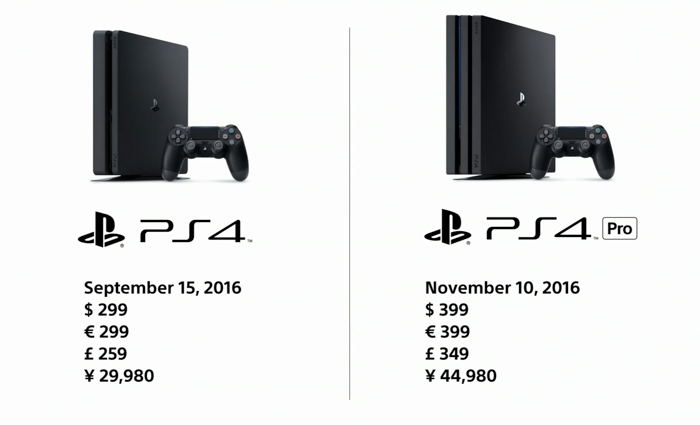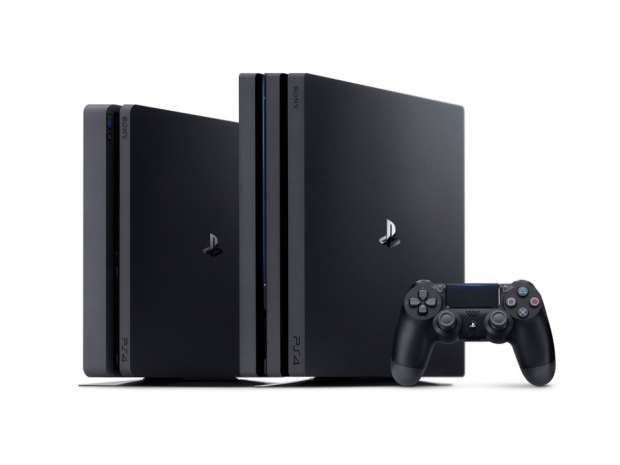Back in June during E3, Sony had confirmed that a 4K-capable, VR-friendly console upgrade would be arriving on the market to upgrade the graphics quality of the original PlayStation 4, without necessarily replacing it. A few weeks ago, it was then discovered that a second PlayStation console would be released along with the upgraded console, only without 4K or VR capabilities, and more as a slimmer refresh to the existing design.
At the company’s announcement at the PlayStation Theater in New York, the mid-generation upgrade was unveiled as the “PlayStation 4 Pro,” while the slimmer refresh was revealed as the “PS4 Slim”.
PS4 Slim – slightly quieter than previous model
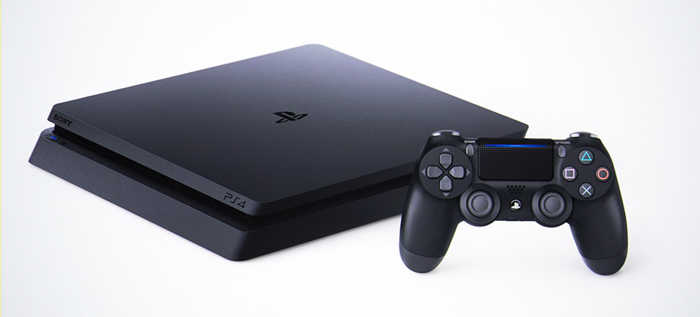
The PS4 Slim refresh is largely characterized by a similar two-halved design, but now featuring physical Power and Eject buttons rather than a haptic design. Above these buttons is the same slot-loading standard Blu-ray drive. On the front panel, there are two widely separated USB 2.0 ports accented by the device’s similar VCR-looking design from the 1980s.
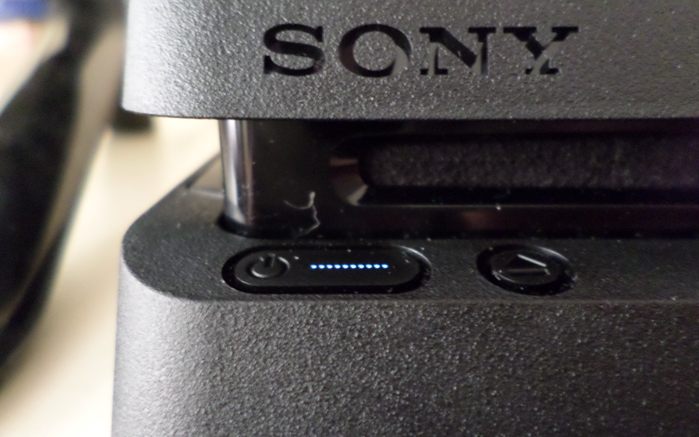
Image credit: DualShockers.com
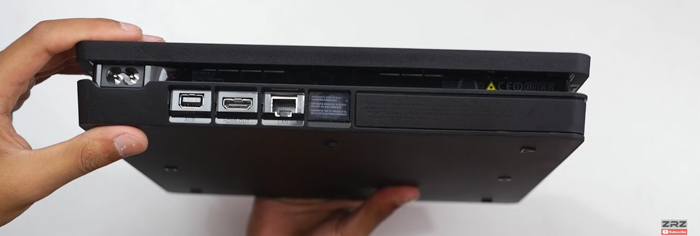
PS4 Slim rear ports (ZRZ via YouTube)
On the back, there is a Gigabit Ethernet port, HDMI 1.4 pot, Auxiliary port for PlayStation Camera, and the usual figure-eight power adapter. What is noticeably missing this time, however, is an optical audio port.
Early reports have claimed that the device is “slightly quieter” than the original console design, at least for anything not involving the disc drive. ArsTechnica notes that the Blu-ray slot drive is actually a bit louder than the original console, but there could always be variations from unit to unit. As far as thermal improvements are concerned, the slimmer design includes additional venting near the rear connection ports, along with ventilation gaps around the device’s edges.
The refresh consoles will arrive in retail stores on September 15th for $299, €299 and £259, respectively.
PlayStation 4 Pro – a VR and 4K capable console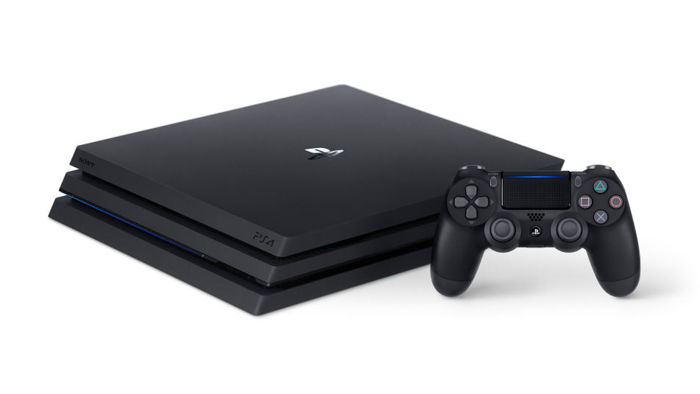
On the surface from an aesthetic viewpoint, the PlayStation 4 Pro is literally the PS4 Slim with a triple-sliced design instead of a halved design, almost like flat Tetris boxes in a pyramid. On the front are two USB Type-C ports to the right side, two haptic Power and Eject buttons, and a slot-loading standard Blu-ray player similar to the other PS4 consoles.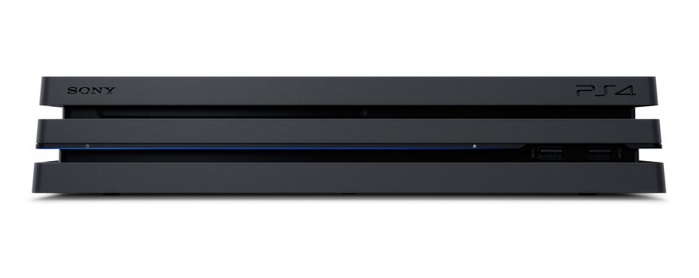
Image source: TheSixAxis.com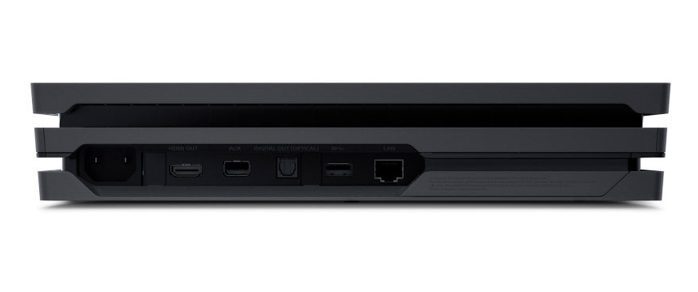
On the back is an HDMI 2.0a port with HDCP 2.2, an optical audio port, a Gigabit Ethernet port, an Auxiliary port for PlayStation VR and Camera, and the larger two-pronged power plug from the original console design.
Unfortunately, the console does not feature an Ultra HD Blu-ray disc player as many had anticipated. One possible reason could be that the company may reserve more premium UHD playback features for any upcoming standalone 4K Blu-ray players, should they ever appear. Another could be that it simply wants to reinforce Ultra HD content consumption over its PlayStation Network streaming platform, particularly in light of rising market share from Netflix, Amazon, Vudu and others.
The mid-generation console upgrade features the same eight-core AMD Jaguar 64-bit as the original PS4, but with a clockspeed increase from 1.6GHz to 2.1GHz. The graphics engine has also been upgraded to double the performance of its predecessor. It now features a custom 4.2-teraflops Radeon GPU with 36 compute units based on a 14nm Polaris core. The original console featured a 1.84-teraflops Radeon GPU with 18 compute units based on a 28nm process. As for memory, the new console uses the same 8GB GDDR5 as the original but with 218GB/s of bandwidth rather than 176GB/s.
In other terms, the new graphics core should be equivalent to an overclocked Radeon RX 470 yet below the Radeon RX 480. Recent reports claim that the revised GPU runs 36 compute units at a clockspeed of 911MHz, while the Radeon RX 480 runs at 1266MHz. Meanwhile, the original console’s chip performance was roughly just above a Radeon HD 7850 and below the Radeon HD 7870, according to some estimates.
Even when considering improvements in horsepower on the smaller 14nm process node, however, the new premium PlayStation 4 Pro consumes about 90W more power than the original console with a 310W TDP, versus the original’s 230W to 250W design, depending on the revision.
The console will become available in retail stores on November 10th at $399, €399 and £349, respectively.
Sony’s developer guidelines require 1080p rendering or higher
Back in June, some developer guidelines were published ahead of the new console’s launch which detailed Sony’s requirements for cross-platform compatibility between the upgraded PlayStation 4 Pro and existing PlayStation 4 hardware.
One main requirement is that in the future 1080p is the mandatory minimum display resolution for new titles, and when developing at higher resolutions, scaling down to full HD is also an option. Another important requirement is that developers cannot have only PlayStation 4 Pro-compatible multiplayer environments, and that any multiplayer severs must be fully cross-compatible between both hardware designs.
Beginning with the mid-generation console refresh, developers are also not allowed to create PS4-only or PS4 Pro-only titles, as the company intends to offer equal gameplay functionality to each console design within the same generation. The same requirements will also apply in terms of which controllers and peripherals are supported. More on the company’s new rendering guidelines can be found here.
PlayStation 4 Pro will not always render at 4K UHD
Not every new PlayStation title in the future will be capable of rendering at exactly 3840x2160p UHD resolution. In Sony’s recent developer guidelines, there is a “debug mode” offering display buffer resolutions of 3680x2070, 3520x1920, 3360x1890 and 3200x1800.
The company mentions also in a slide titled “Lower Resolution Strategies” that a game might prepare a 3520x1920 display buffer when a 4K display is connected, prior to upscaling it to UHD resolution in hardware before outputting the image. Most importantly, however, Sony emphasizes it being very important to ensure that the PlayStation 4 Pro framerate “meets or exceeds the framerate” of the same game on the original console.
HDR content playback coming to all PS4 consoles
PlayStation boss Andrew House mentioned during the console announcements that the entire PlayStation 4 lineup would be receiving support for High Dynamic Range (HDR) content streaming and playback. This feature will be included out of the box with the PlayStation 4 Pro and PS4 Slim, while the original console will be receiving a software update soon. For the upgraded console this means streaming HDR content at Ultra HD resolution, while for standard consoles it likely means streaming HDR content downscaled to 1080p.